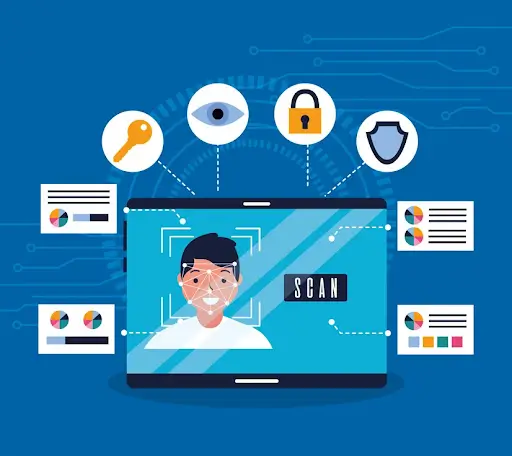The fight against fraud has taken on critical importance for individuals and corporations alike. The methods used by fraudsters are evolving along with technology. And this evolution only makes it more important than ever to have robust identity verification procedures.
But here is some good news. Identity verification is a run-on weapon in the battle against fraud since it uses various methods and technology. Identity verification evaluates the possibility that clients are who they claim to be.
It does so by analyzing data from multiple sources, including online identities, and cross-referencing it with reliable data sources, including the credit bureaus. But just how does it work, and what makes it essential? Keep reading.
1. Dissecting Identify Verification
The easiest way to know someone or something is to run an identity check known as identity verification. For something, an identity check would involve a visual inspection to confirm that something is what you have labeled it as.
Similarly, in the digital realm, identity checks have become vital in verifying whether users are who they claim to be. It is part of identity verification, which involves confirming and authenticating a person’s identity.
To ensure the person is who they say they are, the process includes ascertaining the integrity and correctness of the information they provide.
Historically, identity verification took place in person. Customers typically brought paper documents to verify their identification and the integrity of the information they provided about themselves when opening accounts, making payments, or initiating withdrawals or deposits.
However, today’s world is different. Today, most customers bank, shop, and use mobile devices to access various accounts and services.
Service providers today need to verify and authenticate customers like in the past. Luckily, there are identity verification tools that have come to make this more effective.
2. The Process of Identity Verification
There are various techniques and tools to help with identity verification. The choice of the tool is vital as a good and reliable tool guarantees precision and dependability.
Knowledge-based authentication is a popular method. With knowledge-based authenticators, users are prompted to provide particular details that they would only know. It could be something like your past residences or pet names.
Another technique that is becoming more and more common is biometric verification. Biometric verification uses distinctive physical traits like fingerprints, facial features, or iris patterns to verify identity.
Because of the difficulty of forging or replicating biometric data, biometric verification provides high security.
Moreover, artificial intelligence and machine learning advancements have facilitated the development of sophisticated identity verification systems. These systems can analyze trends and detect abnormalities to flag possible fraud attempts.
3. Tools for Identity Verification
Some technologies and procedures allow for efficient, distant digital identity verification. They include;
Online versions of conventional methods. This includes remotely validating clients’ identity documents using artificial intelligence and machine learning. It could also mean comparing their details (name, address, and date of birth) against reliable data sources, such as banking records.
Another strategy involves examining information about consumer behavior, gadgets, or internet footprints. Biometric devices are one instance of this type.
This strategy uses data analytics to learn more about the device a customer uses to apply. In this instance, it is also possible to utilize the device’s location and IP address to ensure that these data points match the identification and supporting paperwork of the clients.
Using behavioral biometrics, another identity verification technology, businesses can further examine how consumers start online sessions and hold and use their mobile devices.
Companies can identify whether clients have other online accounts that match the information on their online identity. These details can all help determine whether an online identity is genuine or fraudulent.
4. Identity Verification’s Significance
So why should businesses care about identity verification?
Preventing Financial Crimes and Fraud
Identity verification is an essential deterrent against fraudsters. With digitization, fraudsters are busy trying to exploit holes in online systems to commit fraud and financial crimes.
Luckily, businesses can reduce the risk of fraudulent transactions, identity theft, and other financial crimes by verifying the identity of users.
Safeguarding Personal Data
In a time of cyberattacks and data breaches, safeguarding personal data is essential. Identity verification lowers the possibility of identity theft and privacy violations.
It ensures that sensitive data is safe and only available to authorized persons.
Building Confidence and Trust
Building effective relationships, whether between organizations and clients or between people and institutions, starts with trust. The application of identity verification by organizations cultivates trust and confidence among stakeholders.
Solid identity verification systems are a way for businesses to showcase their dedication to security and integrity.
Legal Compliance
Adherence to regulatory regulations is non-negotiable for most businesses. And identity verification is essential to fulfilling these responsibilities.
This is especially true in industries with strict data privacy standards and customer due diligence, such as banking, healthcare, and telecommunications.
Improving User Experience
Identity verification adds to a smooth and frictionless user experience. A good user experience entails good security as well. Businesses can improve customer happiness and loyalty by expediting the verification process and eliminating risks.
Conclusion
Identity verification is a vital defense against fraud, identity theft, and privacy breaches in an era of digital interconnections.
By verifying the legitimacy of individuals and safeguarding confidential data, companies can establish credibility, adhere to legal requirements, provide smooth user experiences, and enhance safety.
Related Posts
Management of Health and Safety at Work Regulations 1999



